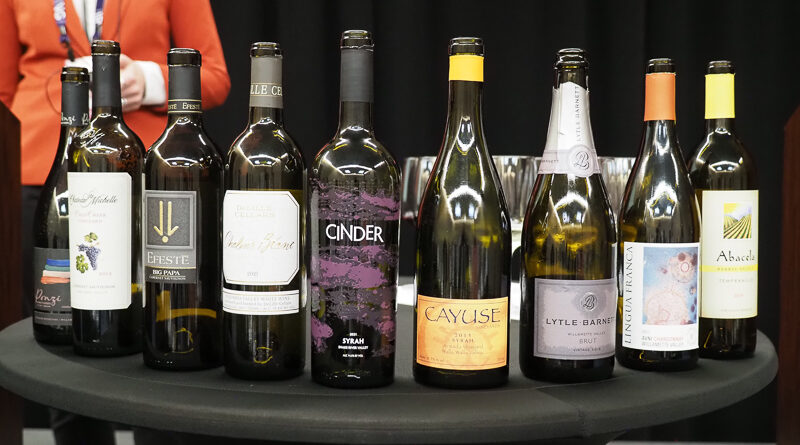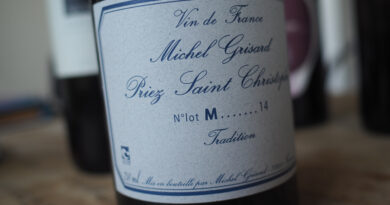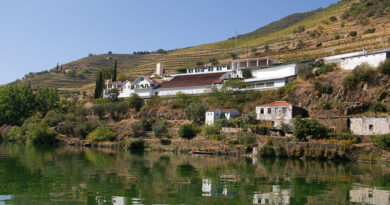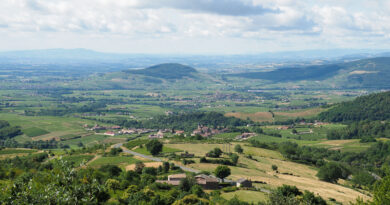Northwest Explorations – Oregon, Washington and Idaho – a Texsom seminar
This seminar was led by Samantha Cole-Johnson and Elaine Heide as part of Texsom.
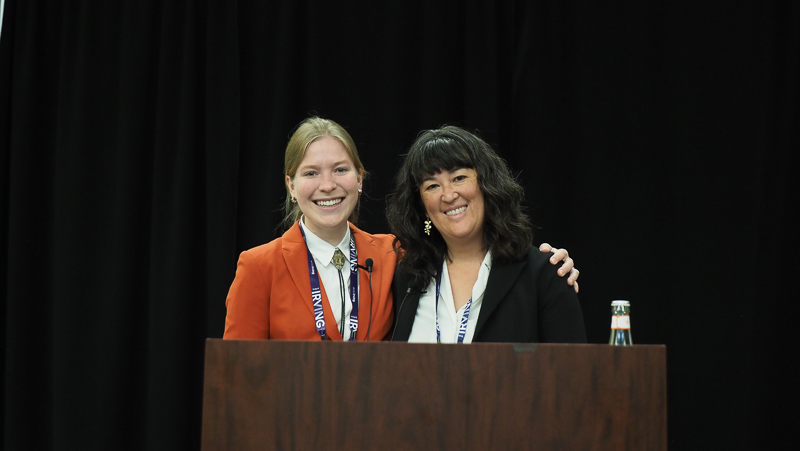
We begin in Oregon, with a historical perspective. Oregon’s notable years:
- 1847 The first grapes were planted
- 1852-1906 Valley View Winery was the first winery
- 1858 Jean Mathiot plants the first Vitis vinifera vines, and a year later he had the largest vineyard in the state
- 1859 Oregon got statehood
- 1916-33 Prohibition, which started earlier in Oregon, followed by the depression and WWII
- 1961 An estate vinifera winery was established: Hillcrest.
- 1965 The modern era begins: David Lett plants Pinot Noir in the Willamette Valley, and Charles Cory also planted some vines.
- 1969 Other pioneers: Dick Erath, The Ponzis
- 1970 Sokol Blosser, followed by some more founding families. Small producers established the Willamette Valley, and everyone planted some Pinot Noir.
- 1979 Becky Wasserman visits the Letts and takes home two bottles of 1975 Eyrie Pinot, which she later enters in a competition without the Letts knowing. It does well, and even better in a rematch. Willamette Valley Pinot Noir on the world stage.
- 1983 Willamette Valley is the first AVA
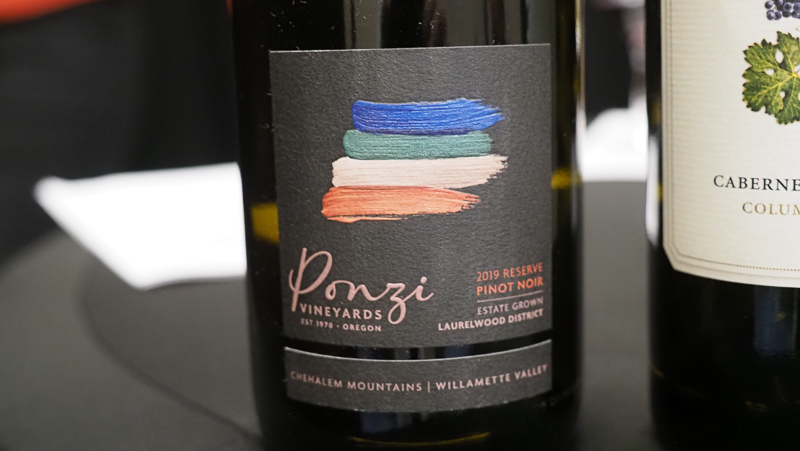
Ponzi Vineyards Reserve Pinot Noir 2019 Laurelwood District AVA, Willamette Valley
40% whole cluster. New AVA. Ripe, fruity and quite lush with smooth black cherry fruit with ripeness and soft tannins. Plush and quite luxurious with nice depth and texture. 92/100
Then we head to Washington State for another historical perspective. Notable years:
- 1874-1900 John Galler winery – the first real winery
- 1917 William Bridgman plants vinifera
- 1920-33 Prohibition
- 1937/38 Bridgman meets Walter Clore
- 1954 American Wine Growers formed – the largest wine company in the USA – making fruit wines
- 1967 Ste Michelle Vintners is formed as the AWG division focusing on vinifera
- 1973 AWG is bought by a group of investors and bundled with a smokeless tobacco company
There’s an important distinction between Washington State and Oregon. Unlike Oregon, it is massive business interests that create the Washington State wine industry. The explosion of the grass roots movement is happening now. Oregon started with grass roots.
Cabernet Sauvignon is the most widely planted grape, with Chardonnay a close second. Riesling is third but declining a little. Then Merlot and Syrah follow.
There are over 1000 wineries but 90% produce under 5000 cases. There are 20 AVAs.
Chateau Ste Michelle Cold Creek Vineyard Cabernet Sauvignon 2012 Columbia Valley, Washington State
Sweet, supple, lush blackcurrant and cherry fruit with some nice texture and smooth tannins. There’s some spicy, gravelly structure here, but it’s cloaked by the sweet fruit. Has mellowed with a decade’s age. Satisfying and broad, and drinking very well now. 92/100
Efestē Big Pappa Cabernet Sauvignon 2017 Columbia Valley, Washington State
They formed the winery in 2001 and David Lake helped them find grape sources. This comes from Bacchus and Sagemoor vineyards, planted in 1972. Sweetly fruited and quite lush with smooth blackcurrant fruit. It’s ripe but there’s a nice freshness and some structure on the finish. This has some substance as well as some polish. 94/100
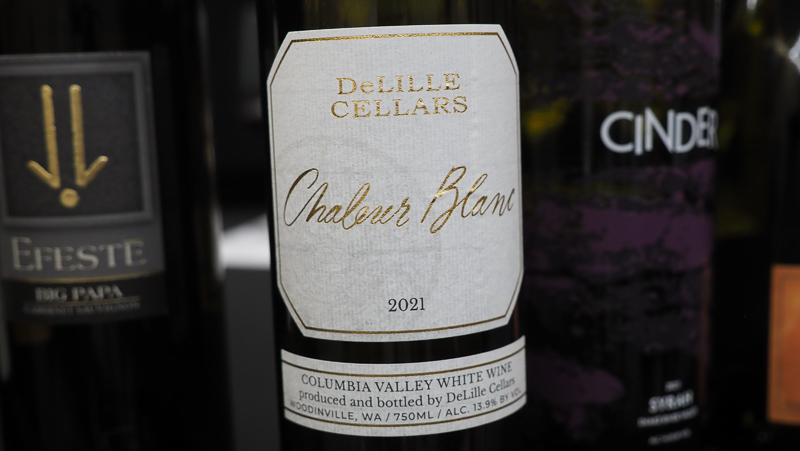
Delille Chaleur Blanc 2021 Columbia Valley, Washington State
The winery was established in 1992 and focuses on Bordeaux blends, red and white. This is a blend of 67% Sauvignon Blanc and 33% Semillon. Fermented and aged in 90% French oak (60% new) and 10% stainless steel. Lovely aromatics here: grapefruit, some smokiness, some spiciness. Has a beautiful marriage of sweet fruit, lovely exotic aromatics, and a touch of spicy oak. Really serious: it’s like white Bordeaux, but has a little more generosity and ripeness, while retaining focus. Finishes crystalline, mineral and long. 94/100
Recent developments in Washington State
Low alcohol and fresh styles as a reaction to the idea of Washington as big and bold. Premiumisation. Based on Washington’s industry structure, what does this look like? Terrifying at the moment. Ste Michelle have just cut a lot of contracts for thousands of acres, this year. This is horrid for growers, says Samantha. But it does drive towards a more sustainable future eventually.
Ste Michelle own 3500 acres and made 57% of state’s wine in 2021. This means they have 11% of what they need to make production. Historically they have bought grapes from large growers, who deliver high tonnage for entry level wines. This discourages organics/biodynamics and hand labour. What’s happening now is growers adding value. Some of them are now making wine, using their own fruit either to make branded wine, or private label wine. For example, Sagemoor are doing this, as well as selling grapes. They have 1400 acres and in 2022 they started their own facility, after starting their own brand in 2014. They still sell grapes to 130 producers.
Idaho
The industry is tied to Washington State. Some historical dates:
- 1856-1919 this was a booming region
- 1935 first post-prohibition winery appeared, with the second in 1972
- 1970s first grapes planted in Snake River Valley, which is an AVA shared with Oregon
Production was 2118 tons in 2019, with 69 wineries.
Cinder Syrah 2021 Snake River Valley, Idaho
This is lush, concentrated and rich. Sweet and layered with bold cherry and berry fruits, with a liqueur-like consistency. Very ripe but has some definition, with a very high pH (3.95), which adds a lushness to the palate. Boldly fruited with lots of appeal. 93/100
The Pacific North West has quite a few cross-state-border AVAs. Lewis-Clark is Washington and Idaho, while Snake River Valley is Idaho and Oregon. Walla Walla is Washington and Oregon, as is Columbia Valley and Columbia Gorge.
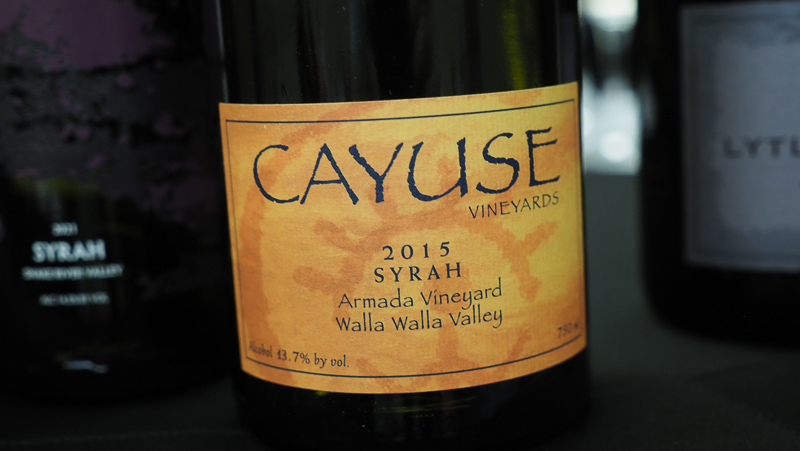
Cayuse Syrah Armada Vineyard 2015 Walla Walla, Washington
High potassium in the soil, leading to high pH, but the TA is good. It’s very tempting to change the pH, but this changes the profile of the wine. 22 months in large-format oak. This has a beautiful nose that’s so distinctive. Smoke, gravel, spice and cured meat with sweet cherries and strawberries. The palate is broad and meaty with some bacon, spice and pepper, with lushness but also definition, and some savoury blood and iodine notes, and some sage. So broad an expressive, showing freshness but also lushness. Remarkable stuff with a long finish. 96/100
Lytle-Barnett Brut 2015 Willamette Valley, Oregon
70% Pinot Noir, 30% Chardonnay. This is a custom crush traditional method sparkling wine project that has really taken off, with 43 clients. It creates an opportunity for others in the region to make traditional method sparkling. Some oak ageing. 1.5 g/l dosage. Quite intense and salty with fresh, concentrated peach and citrus fruit with some softness of texture but also nice brightness on the finish. Has subtle toast and spice. Nice vinous finish. 92/100
Oregon recent developments
One is Chardonnay, which has been in the valley since 1965. There have been some outstanding Chardonnays, and now there is demand. Now everyone is talking about Oregon Chardonnay. In 2009 it was declining: 958 acres were in the ground. In 2020 2724 acres. Evening Land helped create this demand on Seven Springs vineyard, which began in 2007. They picked very early on the advice of Dominique Lafon. He asked to pick the Pinot Noir early but the crews refused, but they did pick the Chardonnay, and the results were stunning. In 2021 Chardonnay became more expensive than Pinot Noir.
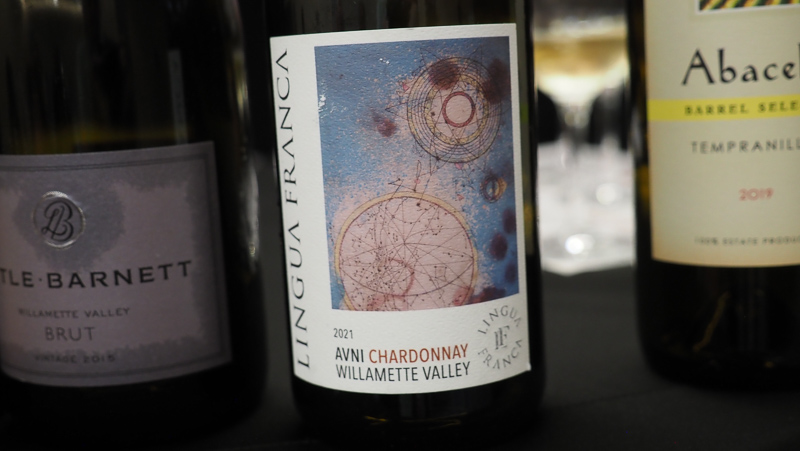
Lingua Franca Avni Chardonnay 2021 Willamette Valley, Oregon
Larry Stone started this with Dominique Lafon as consultant after he left Evening Land. Concentrated and linear with nice texture. Shows pear, aniseed and some white peach. Nice weight and depth here with lovely fruit, finishing fresh with good acidity. Oak is beautifully integrated. 93/100
Abacela Barrel Select Tempranillo 2019 Umpqua Valley, Oregon
Fresh, floral and supple with nice sweet lush black fruits. These are so nicely balanced with good structure and acidity. A fresh, fleshy, expressive example of Tempranillo with great balance. Has a slight saltiness on the finish. Impressive. 93/100

